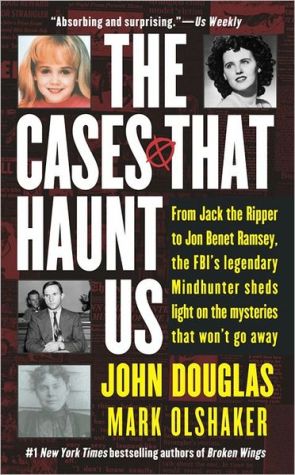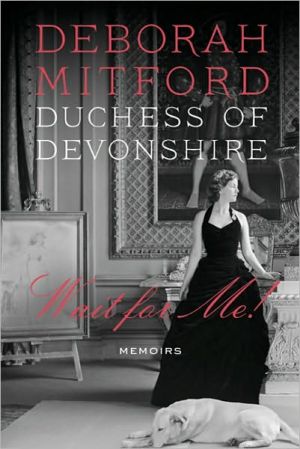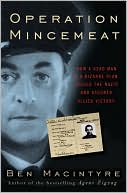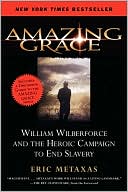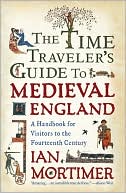The Cases That Haunt Us
Violent. Provocative. Shocking. \ Call them what you will...but don't call them open and shut.\ \ Did Lizzie Borden murder her own father and stepmother? Was Jack the Ripper actually the Duke of Clarence? Who killed JonBenet Ramsey? America's foremost expert on criminal profiling and twenty-five-year FBI veteran John Douglas, along with author and filmmaker Mark Olshaker, explores those tantalizing questions and more in this mesmerizing work of detection. With uniquely gripping analysis, the...
Search in google:
Violent. Provocative. Shocking. Call them what you will...but don't call them open and shut. Did Lizzie Borden murder her own father and stepmother? Was Jack the Ripper actually the Duke of Clarence? Who killed JonBenet Ramsey? America's foremost expert on criminal profiling and twenty-five-year FBI veteran John Douglas, along with author and filmmaker Mark Olshaker, explores those tantalizing questions and more in this mesmerizing work of detection. With uniquely gripping analysis, the authors reexamine and reinterpret the accepted facts, evidence, and victimology of the most notorious murder cases in the history of crime, including the Lindbergh baby kidnapping, the Zodiac Killer, and the Whitechapel murders. Utilizing techniques developed by Douglas himself, they give detailed profiles and reveal chief suspects in pursuit of what really happened in each case. The Cases That Haunt Us not only offers convincing and controversial conclusions, it deconstructs the evidence and widely held beliefs surrounding each case and rebuilds them — with fascinating, surprising, and haunting results.
Chapter One: Jack the Ripper\ In the dark realm of serial killers, this is ground zero: the point from which virtually all history and all discussions begin.\ By modern standards, the ghostly predator who haunted the shadowy streets of London's East End between August and November of 1888 was nothing much to write home about. Sadly, many of his successors — people I and my colleagues have had to hunt — have been far more devastatingly productive in the number of lives they took, and even the gruesome creativity with which they took them. But none other has so quickly captured and so long dominated the public's fascination as Jack the Ripper: the Whitechapel Murderer, the personification of mindless brutality, of nameless, motiveless evil.\ Why this one? Why him (although some still steadfastly maintain it was a her)? There are several reasons. For one, the crimes — a series of fatal stabbings that escalated into total mutilation — were concentrated in a small geographic area, directed at a specific type of preferred victim. For another, though there had been isolated sexually based killings in England and the European continent in the past, this was the first time most Victorians had ever faced or had to deal emotionally with such a phenomenon. Add to this a social reform movement and a newly energetic and outspoken press eager to call attention to the appalling living conditions in the East End, and you have all the ingredients for what became, literally, one of the biggest crime stories of all time.\ The reasons why these murders continue to fascinate above all others, even in this modern age with our seemingly endless succession of "crimes of the century," are equally strong, though, as we will quickly learn, often based on misimpression. In spite of their barbarism, they represent a real-life mystery from the era of Sherlock Holmes — the bygone romantic era of high Victorian society, gaslights and swirling London fog, though where the killings actually took place had little real relationship to Victorian splendor, and each crime was actually committed on a night without fog. On only one of the nights was it even raining. In fact, at the same time the Ripper murders were terrorizing the desperate East End, a melodrama based on Robert Louis Stevenson's The Strange Case of Dr. Jekyll and Mr. Hyde was thrilling audiences at the Lyceum Theatre in the fashionable and comfortable West End. Together these two events, one safely fanciful and the other horrifyingly real, gave many their first dawning awareness of the potential for inherent evil in so-called ordinary or normal people.\ And despite a tremendous allocation of manpower and resources on the parts of two police forces at the time, and the efforts of countless "Ripperologists" in the more than 110 years since then, the crimes remain unsolved, tantalizing us with their profound mystery (though if we were working them today, I feel confident we could crack them in relatively short order). Some of the suspects and motives are very "sexy" — far out of the range of the normal serial killer — including not only the royal physician but also the two men in direct line to the throne!\ And as important as any other reason for the continuing fascination is that powerfully evocative and terrifying name by which the unknown subject — or UNSUB, as we refer to him in my business — was called. Although here again, I maintain that this was not the identity he chose for himself.\ But whatever the misconceptions or qualifications, we have to acknowledge that Jack the Ripper created the myth, the evil archetype, of the serial killer.\ As a criminal investigative analyst and the first full-time profiler for the FBI, I'd often speculated about the identity of Jack the Ripper. But it wasn't until 1988, the hundredth anniversary of the Whitechapel murders, that I actually approached the case as I would one that was brought to me at the Investigative Support Unit at Quantico from a local law enforcement agency.\ The occasion was a two-hour television program, The Secret Identity of Jack the Ripper, set to be broadcast live from Los Angeles in October and hosted by British actor, writer, and director Peter Ustinov, with feeds from experts in London at the crime scenes themselves and at Scotland Yard, the headquarters of London's Metropolitan Police. When the producers approached me about participating in the program and constructing a profile of the killer, I decided it was worth a try for a couple of reasons. First, I thought the profile might be useful in training new agents. Second, it's difficult to resist matching wits, even a century later, with the most famous murderer in history. And third, since it was a hundred years after the fact, no negative consequences were possible other than making a fool of myself on national television, a fear I'd long since gotten over. Unlike with the scores of "real" cases I was dealing with every day, no one was going to die if I was wrong or gave the police bad information. More than a decade later, I still believe in the analysis I did, with an interesting and important addition, which we'll get to later.\ I captioned the profile the way I would an actual one that would become part of a case file:\ UNSUB; AKA JACK THE RIPPER;\ SERIES OF HOMICIDES\ LONDON, ENGLAND\ 1888\ NCAVC — HOMICIDE (CRIMINAL INVESTIGATIVE ANALYSIS)\ \ The FBI, like most government agencies, is addicted to acronyms. The one on the last line, NCAVC, stands for National Center for the Analysis of Violent Crime, the overall program established in 1985 and located at the FBI Academy to encompass a bunch of other acronyms including, but not limited to, the BSU, or Behavioral Science Unit (teaching and research); ISU, the Investigative Support Unit, which carries out the actual consulting, profiling, and criminal investigative analysis; and VICAP, the Violent Criminal Apprehension Program computer database on multiple offenders. During my tenure as chief of ISU, we and other operational entities, such as HRT, the Hostage Rescue Team, were pulled in under the umbrella of CIRG, the Critical Incident Response Group. And after I retired in 1995, my unit was, for a time, absorbed into a new group, CASCU, the Child Abduction and Serial Crimes Unit. Anyway, you get the idea.\ I cautioned the producers the same way everyone in my unit had been trained to caution the police and law enforcement agencies around the United States and the world with whom we dealt: our work can only be as good as the case information provided to us. Many of the tools we'd have to work with today — fingerprints, DNA and other blood markers, extensive crime-scene photography — were not available in 1888, so I'd have to do without them in developing my analysis. But then, as now, I would still begin with the known facts of the crimes.\ Like most serial murders, the case is complicated, with multiple victims and leads that go off in many directions. It is therefore useful to go into the case narrative in some detail, just as we would if we were receiving it from a local law enforcement agency seeking our assistance. So we'll relate the details — anything that might be important to the profile — and analyze each element at the proper point in the decision-making process. In that way, we can see something of how the analytical decisions in mindhunting are made and on what they are based. By the time we present the profile, you should have some background and perspective for understanding the choices and conclusions I've come to. We can then apply this process to all of the subsequent cases we'll consider. The more a profiler knows of the story of what happened, the better able he or she will be in putting together the why and the who.\ Whenever we construct a profile or offer analytical or strategic assistance to a local law enforcement agency on a series of unsolved crimes, a critical part of the case materials we request is a map with crime scenes indicated and a description of what each area is like. And in this case, geography is a particularly important consideration because it so carefully defines the type of victim selected and type of offender who would feel comfortable here.\ "THE ABYSS"\ I always stress the importance of understanding the victimology and social context of the crime. And you can't understand this case without some comprehension of what life was like in the East End of London, specifically Whitechapel and Spitalfields, in the final decades of the Victorian era. Adventure novelist Jack London would characterize this area as "the Abyss" after spending seven weeks living there during the summer of 1902. The nonfiction book that emerged from this experience, The People of the Abyss, would become just as much of an instant classic in its own circles as The Call of the Wild, published the same year. And the conditions and situation described were little different in 1902 than they had been fourteen years earlier.\ The most extreme areas of the East End — the region bordering Whitechapel High Street and Whitechapel Road, just north of the Tower of London and the London Docks — was a strange, distant, and fearful place to those fortunate enough to live elsewhere within the metropolis. Though it was but a short cab or railway journey away from central London, the virtual capital of the Western world when it was true that the "sun never set" on the richest and most economically productive empire in history, this district was a teeming, Dickensian area of factories, sweatshops, and slaughterhouses. Dominated by poor cockneys, it was increasingly populated by immigrants straight off the docks, particularly Eastern European Jews escaping persecution and pogroms, with their strange languages, insular customs, and wariness of gentiles. Many of them joined their fellow countrymen in the tailoring and leather trades centered around Brick Lane. Middlesex Street, better known as Petticoat Lane, became a bustling Sunday marketplace of Jewish goods and culture.\ Here in Whitechapel, skilled jobs were scarce and disease was rampant. Those lucky enough to have a place to live were crammed into dirty and primitive accommodations without even the semblance of privacy. The rest, figured to be about 10 percent of the East End's total population of nine hundred thousand, lived a day-to-day existence — on the streets, in the grim and notorious public workhouses, or in the hundreds of filthy "doss-houses," which offered a bed for around fourpence a night, paid in advance.\ Mary Ann Nichols, known as Polly, was a prostitute, one of about twelve hundred in Whitechapel at the time, according to Metropolitan Police estimates. She was five feet two inches tall, forty-five years of age, and had five missing teeth. Many, if not most, of the women like Nichols were not prostitutes by choice. Existence for them (and often, their families) was so desperate that turning cheap tricks might mean the difference between eating and not eating, between having a place to sleep and taking their chances on the dark and dangerous streets. Add to this the chronic alcoholism through which many women tried to forget their hopelessness, and we see a segment of society living on the very fringe.\ Polly Nichols was the mother of five children and the survivor of a tempestuous marriage that had finally broken up over her inability to stay away from the bottle, a situation initially caused, she claimed, by her husband William's philandering. He was given custody of the children. At a little after 1:00 in the early morning hours of Friday, August 31, 1888, Polly was attempting to finesse her way into a doss-house on Flower and Dean Street, where she'd been sleeping for about a week. She'd spent most of the last month in another doss-house one block over on Thrawl Street, in a room she shared with four other women. But this evening, she didn't have the required fourpence for her bed, having just spent money she'd earned earlier in the day on liquor at the Frying Pan pub down the block where it intersected with Brick Lane.\ The deputy lodging housekeeper would not let her stay without payment. Polly told the man not to give her bed to anyone else and, giddy with drink, declared, "I'll soon get my doss money. See what a jolly bonnet I've got now." Apparently, the hat had been bought for her by a customer and made her feel more attractive.\ At about 2:30 A.M., she met up with her friend Ellen Holland, also known as Emily. In the East End, multiple names were apparently common. Holland, who had previously shared the Thrawl Street room with Polly, had come out to watch a large fire, a common form of entertainment for those too poor to afford any other. She reported Polly to be extremely drunk and leaning against a wall for support.\ Ellen urged her to go back to Thrawl Street, but Polly confessed, "I've had my lodging money three times today and I've spent it. It won't be long before I'm back." Then she wandered off in the direction of Flower and Dean Street.\ That was the last time anyone saw Polly Nichols alive.\ About 3:40 that morning, two carmen, or wagon drivers, Charles A. Cross and Robert Paul, were walking to work along Buck's Row, about a block from London Hospital on Whitechapel Road, when Cross thought he saw a tarpaulin on the other side of the street near the entrance to a stable. He went over to examine it more closely and see if it was usable. But when he neared the tarp, he realized it was the body of a woman, her eyes wide open, hands by her side, skirts hiked up to her waist, and legs slightly parted. Next to the body was a black, velvet-trimmed straw bonnet.\ Cross called Robert Paul over. He felt the woman's face, which was still warm, leading him to believe she might still be alive. He listened intently and thought maybe he detected a faint heartbeat. But Cross felt her hands, which were cold, and concluded she was dead. The two men left to find a policeman.\ They found Metropolitan Police constable Jonas Mizen walking his beat on nearby Hanbury Street and told him what they'd found. Mizen hurried back with them to Buck's Row, where Constable John Neil had just come upon the body on his own. With his lantern, Neil signaled another passing police officer, Constable John Thain. He directed Thain to go find Dr. Rees Ralph Llewellyn, the nearest general practitioner, then told Mizen to secure an ambulance, which in those days meant a two-wheeled wagon long enough to hold a stretcher.\ Thain awakened Llewellyn, who arrived on the scene to examine the victim. By this time, two local slaughtermen, Henry Tomkins and James Mumford, were also on scene, though whether they had just happened to show up or had been passing the time with Constable Thain prior to his being called in on the case is unclear. Dr. Llewellyn noted severe lacerations to the victim's throat, but little blood on or around the body. At about ten minutes to 4 A.M., he pronounced the woman dead, estimating that, since the legs were still warm, death had occurred no more than thirty minutes previously and that she had been killed on the spot. The body was taken to the mortuary at the Old Montague Street Workhouse Infirmary. By the time Inspector John Spratling arrived around 4:30 A.M., a crowd was already forming, and the news of the murder started filtering through Whitechapel. Spratling told the other officers to search the scene and surrounding area, then went to join Dr. Llewellyn at the mortuary to record the official description of the corpse.\ At the mortuary, Spratling discovered some even more disturbing information than what he'd expect from the "routine" murder of a prostitute — though, strictly speaking, her status had not yet been confirmed since no identification had been made. Still, the circumstances and the fact that she was out on the street at that hour strongly suggested the vocation. Unfortunately, then as now, prostitute murders were not unheard of, often involving simple robbery or a customer who believed he'd contracted a disease. Once clothing had been removed from the body, Spratling could plainly see that in addition to the neck wounds, the abdomen had been ripped open and the intestines exposed.\ The following morning Dr. Llewellyn returned to do a complete postmortem. He noted bruising on the face and neck and a circular incision on the neck that completely severed all the tissues down to the vertebrae as well as the major blood vessels of the neck. The deep cuts appeared to have been made with a sharp, long-bladed knife. Llewellyn believed the killer had at least some rough anatomical knowledge and, from a thumb bruise on the right side of the neck, thought he might be left-handed.\ BEHAVIORAL CLUES\ Looking at this case today with a body of knowledge and experience unavailable to the Victorian investigators (it would be several years before even fingerprinting was available), we could already start putting together some behavioral clues from the wound patterns. The severe bruising about the face suggests to me an initial "blitz-style" attack. In other words, the UNSUB attempted to neutralize his potential victim quickly and unexpectedly before she could put up a defense. This, in turn, suggests an offender who is unsure of himself and has no confidence in his ability to control her or get her where he wants her through any kind of verbal means — an inadequate personality as opposed to one with the confidence to think he can easily dominate women. This, as we'll see, gives us even more clues to his personality and emotional background.\ The neck bruising indicates an attempt to choke the victim and further render her incapable of resistance. Then we see the multiple deep stab wounds, which suggest a frenzy of anger and, generally, released sexual tension. That the face suffered no other significant wounds after the initial blitz makes me think that the UNSUB did not know the victim. If this had been a more personally directed attack, I would have expected to see more obliterating wounds to the face, which would represent her persona or humanness. Like just about everything else in profiling and criminal behavioral analysis, this is not a hard and fast rule, as we'll see in the next chapter. But in cases in which the motivation for the crime is essentially power and control — a power and control unavailable to the UNSUB in any other aspect of life, as I would believe it to be here — facial attack is a common phenomenon.\ Then we have the deep, circular incision around the neck. This seems clear to me — an attempt to take the head off the victim. Those who have read any of our previous books will know that one of the ways we categorize killers and other sexual predators is according to whether we consider them organized, disorganized, or mixed — that is, a combination of the two types. A killer who wants to decapitate his victim, especially out on the street, which is always a high-risk environment, is someone who I would suggest is "not all there." This is further underscored by the ripping open of the belly and the exposure of the intestines. That doesn't mean he can't mentally form criminal intent, and it doesn't imply that organized killers are normal, socially integrated individuals. It does, however, tell me that this UNSUB's motivations and fantasies are so aberrant that they would interfere with his routine functioning, even his ability to pull off an efficient crime. This is someone who both hates women and has a bizarre and perverse curiosity about the human body that I can only characterize as demented.\ While we're on this subject, let's clarify one thing. All killers and sexual predators, in my opinion, have some degree of mental illness. By definition, you can't willingly take another life in this manner and be mentally healthy. However — and this is a big however — though you may be mentally ill, that does not mean that (a) you do not know the difference between right and wrong and (b) you are unable to conform your behavior (not your thoughts necessarily, but your behavior) to the rules of society. This is the essence of the M'Naghten Rule, the original codified British legal test of criminal responsibility, which had already been in effect for more than half a century by the time of the Whitechapel murders and which still serves as the basis for the tests of insanity we use today. The rule is named for Daniel M'Naghten, who tried to kill British prime minister Sir Robert Peel, the organizer of London's Metropolitan Police Force.\ So someone can be mentally ill but still criminally responsible — they do what they do because they want to rather than because they have to. Some psychiatrists refer to this problem as a character disorder, a description that I think is pretty accurate.\ But are some offenders so far gone that they really do not know what they're doing is wrong? Sure, there are some, and from my experience they also tend to be delusional or hallucinatory. But we can often pick out this type rather quickly, and because they're so disorganized and "crazy," we usually catch them before long. Was the Whitechapel killer one of these? Had he gone over the edge from character disorder to total nutcase? We need more evidence before we can make that determination.\ The murder victim was wearing several layers of clothing, which she would have had to do if she was homeless. Her only other personal possessions were a comb, handkerchief, and broken mirror. But on one of her petticoats, police noticed the laundry mark of the Lambeth Workhouse. By process of elimination, the victim was determined to be Mary Ann, or Polly Nichols, although the initial attempt to have her body identified failed, possibly because of the mutilation. She was eventually identified by Mary Ann Monk, who had been at the Lambeth Workhouse at the same time. On September 6, 1888, she was buried in a pauper's grave in the City of London Cemetery at Little Ilford, Essex.\ PATTERN CRIMES?\ There was little to go on in solving the crime. Scotland Yard's Chief Inspector Donald Sutherland Swanson admitted that detectives were stumped by the "absence of motives which lead to violence and of any scrap of evidence, either direct or circumstantial." In fact, Swanson and his colleagues just didn't understand the motive. They'd have had no reason to; they'd never seen it before. However, despite the lack of experience with this type of crime, both Dr. Robert Anderson, assistant Metropolitan Police commissioner in charge of the Criminal Investigation Department (CID), and CID assistant chief constable Melville Leslie MacNaghten said that it was obviously the work of a sex maniac.\ It was possible, though, that the Nichols killing was related to an earlier prostitute murder in the East End; no one was certain. In fact, they're not sure to this day.\ Martha Tabram, also known as Emma Turner, was the estranged wife of a warehouseman, Henry Tabram. After the estrangement, she lived on and off for a number of years with William Turner, who, though a carpenter by training, worked as a street hawker. This accounts for her two surnames. As in the case of Polly Nichols, each man eventually left her because of her excessive drinking.\ On the evening of August 6, 1888, a bank holiday, Martha went out with her friend Mary Ann Connolly, known locally as Pearly Poll. Connolly later testified that the two of them had visited several pubs, including the Two Brewers, where they were picked up by two members of the Grenadier Guards, a prestigious unit of the army. They went to other pubs, including the White Swan on Whitechapel High Street, before finally parting company around 11:45 P.M. Poll and her guardsman then went into Angel Alley for stand-up sex against a wall. She saw Martha go into George Yard, presumably with similar intentions.\ At around 3:30 the next morning, taxi driver Alfred Crow returned to his tenement flat on the northeast side of George Yard and saw what he thought was a derelict sleeping on the first-floor landing. About an hour and twenty minutes later, another tenant and dockyard laborer, John Saunders Reeves, came downstairs and saw what he realized was a body.\ Dr. Timothy Killeen, who examined the body for the police at about 5:30 A.M., estimated that the approximately forty-year-old woman had died about two hours previously, or shortly before Crow first noticed her. Altogether, the victim had suffered thirty-nine stab wounds, with the breasts, abdomen and genitalia being the primary targets. Most of the wounds were unremarkable in terms of the likely weapon used, with the exception of a wound in the center of the sternum, which appeared to have come from a dagger or bayonet. This suggested that perhaps the crime had been committed by the guardsman with whom Martha Tabram had been seen earlier in the evening.\ With two unsolved murders in the same area in the same month, uneasiness settled over Scotland Yard. But apart from those who knew either of the unfortunate victims, London as a whole, and even the East End, did not really take notice. After all, homeless prostitutes were the throwaways of society, and even though both crimes were exceedingly brutal and seemed without apparent motive, this was not something with which proper folk had to be overly concerned.\ That all changed on the morning of Saturday, September 8, and in a sense, the world of criminology has not been the same since.\ ANNIE CHAPMAN\ Just before 6 A.M., carman John Davis finally got up after having spent a restless night. He left the third-floor flat he'd occupied for about two weeks with his wife and three sons at 29 Hanbury Street and went downstairs to go to the outside privy. To the left of the back-door steps, he suddenly saw a body. A woman was lying on her back between the steps and the fence of the property's yard. Her dress had been pulled up over her head, her belly had been ripped open, and her intestines were not only visible this time, but pulled out and draped over her left shoulder. Other residents and passersby quickly assembled. Some of them and Davis each went off in search of a policeman. One, Henry Holland, found a constable a couple of blocks away at Spitalfields Market, but the officer told him he could not leave his fixed point. This was but one example of the procedural rigidity of the law enforcement of the day, which would hamper many attempts at bringing the UNSUB to justice.\ The first senior police officer on the scene was Inspector Joseph Chandler. He was on duty at the Commercial Street Police Station when he saw men running up Hanbury Street. When he realized what had happened, he rushed to the murder site, covered the body, then sent for Dr. George Bagster Phillips, the police surgeon for H Division, the area where the crime had occurred. Phillips examined the brutally butchered but ritualistically arranged corpse. At the inquest, he described what he had seen:\ The left arm was placed across the left breast. The legs were drawn up, the feet resting on the ground, and the knees turned outwards. The face was swollen and turned on the right side. The tongue protruded between the front teeth, but not beyond the lips. The tongue was evidently much swollen. The front teeth were perfect as far as the first molar, top and bottom, and very fine teeth they were. The body was terribly mutilated.... The throat was dissevered deeply; the incisions through the skin were jagged, and reached round the neck.... On the wooden paling between the yard in question and the next, smears of blood, corresponding to where the head of the deceased lay, were to be seen.\ Phillips went on to observe that all of the wounds appeared to have been made by a sharp knife with a narrow blade and that the evisceration indicated some medical knowledge. He speculated that all of the mutilations may have taken as long as an hour, though with what I've seen from even moderately experienced serial killers, I would suspect less time. As in the case of Polly Nichols, there was no evidence of a struggle. Apparently, the UNSUB had also attacked this one suddenly, neutralizing her before she could fight back.\ A message was sent to Inspector Frederick George Abberline of Scotland Yard's H Division, and he quickly showed up on the scene. Abberline, who was forty-five years old and married for the second time (his first wife died of consumption the same year he married her), is something of a legend in police circles, though details of his personal life are rather sketchy. He had risen quickly through the ranks from constable (patrolman) to sergeant, to undercover operative and detective, and then to inspector. Abberline would come to take charge of all the detectives in the Whitechapel investigation.\ As he waited for Abberline and other Scotland Yard officials to arrive, Inspector Chandler had the crime scene thoroughly searched. The woman's pocket had been slit open and its contents included such ordinary items as two combs, a piece of muslin, and a folded envelope containing two pills. About two feet away, they found a bloodstained leather apron, of the type worn by slaughterhouse workers or possibly cobblers or leather workers. Since the apron was not wet with blood, it was highly questionable whether it was related to the crime. And since in those days there was no scientific means of typing blood, or even determining for certain whether it was from a human being or an animal, a bloodstained garment from one of the many slaughterhouses in the area would have been easily explainable. Still, any potential clue was likely to have a "life of its own," as this one certainly did.\ Dr. Phillips told the inquest he believed the three personal items had been placed with some care — the muslin and the combs at the victim's feet and the envelope by her head. Two farthing coins were also near the body, though this detail was kept secret by the police to help qualify suspects. If this description is accurate, it's another indication of a particular psychosis and mental instability. We often find this in disorganized or mixed offenders — that is, a brutal frenzy of attack, together with careful, ritualistic elements that indicate a need to control or master small, discrete components of the crime scene or victim.\ One of my earliest major profiling cases involved the murder of a twenty-six-year-old teacher of handicapped children who was mildly handicapped herself with curvature of the spine. She was found strangled, severely beaten, and sexually abused at the top of the stairwell of the apartment building where she lived with her parents on Pelham Parkway in the Bronx, New York. She had been spread-eagled and tied with her own belt and nylon stockings around her wrists and ankles, though the medical examiner determined she was already dead when that was done. The cause of death was ligature strangulation with the strap of her pocketbook. The NYPD photos showed a scene of appalling gore and cruelty, and this told me a lot about the offender. What told me even more was that her nipples had been cut off after death and placed on her chest, her comb was set in her pubic hair, and her earrings had been placed symmetrically on the ground on either side of her head. This type of compulsiveness and strange ritualism amidst such a frenzy of disorganized mayhem said to me that my prey had some deep and long-term psychological problems. The meth
Contents Introduction 1. Jack the Ripper 2. Lizzie Borden 3. The Lindbergh Kidnapping 4. The Zodiac 5. American Dreams/American Nightmares 6. The JonBenet Ramsey Murder 7. Perspectives Index
